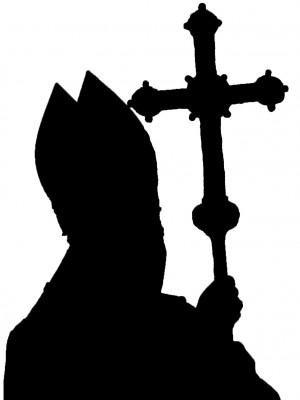
Since the kids have grown up, I normally go to Sunday Mass alone.
Occasionally I can bribe a grandchild or two with promises of MacDonald’s afterward, but for the most part I sit by myself in my usual pew – right side, near the front – week after week.
Lately, more and more often, I look around the church at the steadily shrinking number of bowed heads and begin to question.
I don’t question why are there fewer people. Instead, I wonder why are there still so many and why is it that I am among them?
Last month, Pope Benedict took me a few steps closer to unraveling the mystery in myself and the other 1.2 billion Catholic souls.
The average person probably doesn’t spend a lot of time thinking about how they have been shaped by the Roman Catholic Church. But they have been, whether they’re Christian or not.
Catholicism is the history of the western world. It has framed every part of our development – science, music, art, politics, other religions. Even the passing of time, until not that long ago, was marked in terms of either before or after the birth of Jesus Christ.
The world was shocked at the announcement Pope Benedict XVI was resigning, while he’s still alive and in full control of his faculties. It was a defiance of almost 600 years of tradition.
It gives us a glimpse into the source of the Church’s timeless strength, that almost immoveable obedience to ancient ideas and traditions.
Unfortunately, in modern times, that strength is also its greatest weakness.
It’s been a strict hierarchy these past 2000 years for a church that has survived corruption and crime and brutal power struggles. But most Catholics had no problem disconnecting themselves from all that drama, pageantry and Vatican-driven bureaucracy.
That was all worlds away from our own small parishes. It really had nothing to do with us. Basically, those beloved little churches, all over the earth, still had the power to do for the individual Catholic what the church as an institution could not.
So, what is that exactly?
The answer for me, and I think for a lot of other people, is rooted in those very ancient practices the Catholic Church is so wedded to.
For a lot of people, in order to really connect to their own spirituality, it’s not enough to passively accept a weekly lecture, mumble a prayer and move on till next Sunday. To really feel alive spiritually, a lot of people have to actively participate, to take part in some kind of expression.
A Catholic Mass certainly can provide that “something.” And it’s more than just flowing robes, burning candles and the haze of incense.
Along with all of that is the simple but primal Catholic idea that the physical act of accepting those symbols causes a spiritual reality.
Of course, whether or not that is true is debatable, but the drive towards some kind of spiritual connection isn’t.
It’s part of being fully human.
For a Roman Catholic in modern times, it is getting harder to insulate ourselves from that ultimate pulpit – the Vatican. It is getting harder not to think that our mere presence at a Catholic service is somehow an acceptance of the hypocrisy that seems to grow with every successive layer of assigned holiness.
Today, especially in the face of the worst kind of betrayal, the sexual abuse of children, the organization has moved way beyond being simply a flawed and pompous political entity. Now they have damaged their true base of power – the faithful masses.
And, for that, 2000 years of business as usual won’t be enough.

